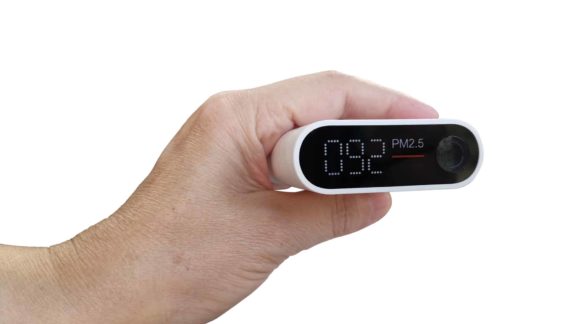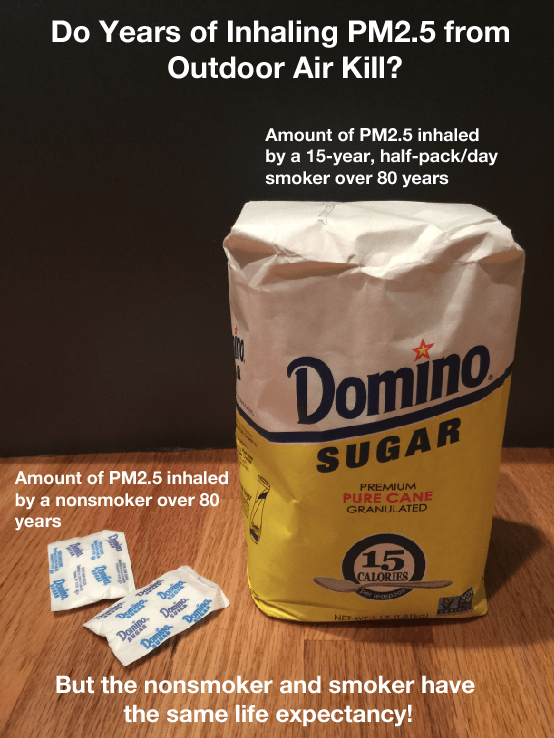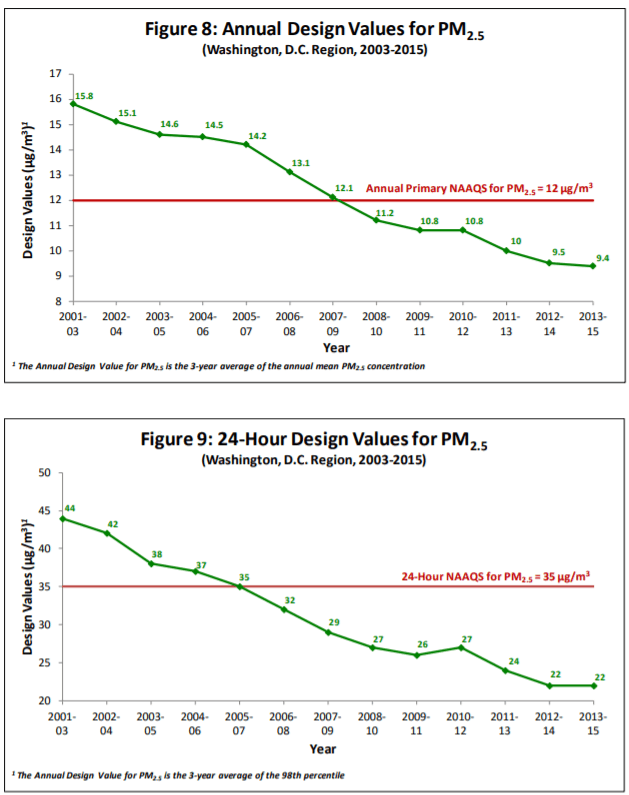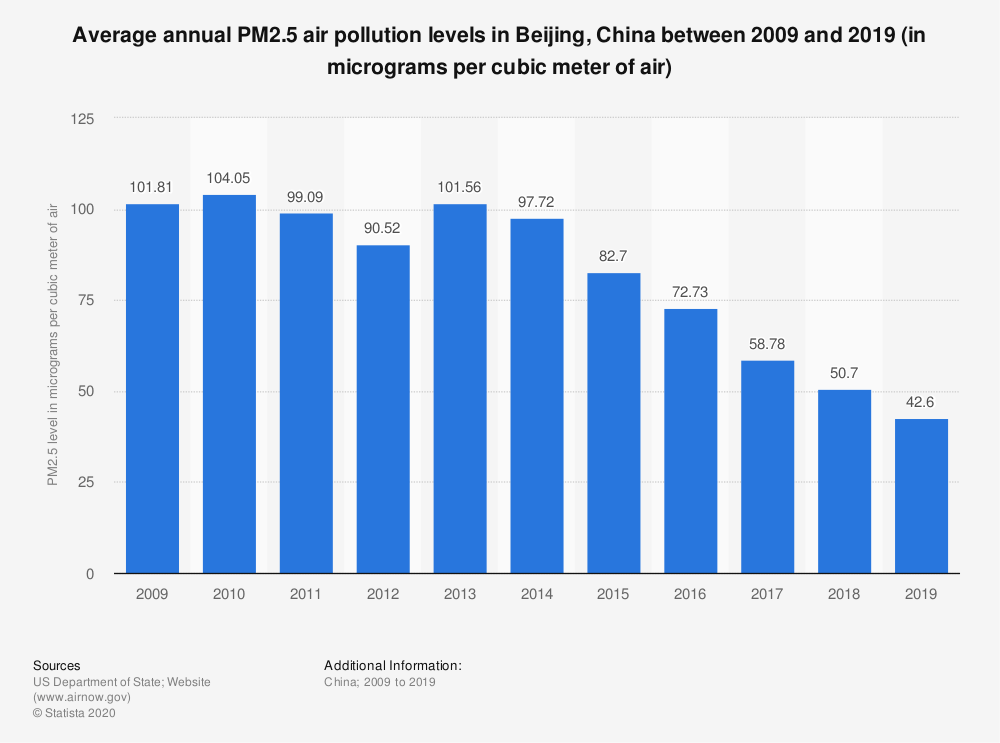New York Times Trashes EPA’s Particulate Matter Rule

Photo Credit: Getty
The Environmental Protection Agency (EPA) on Monday, December 7, finalized its national ambient air quality standards (NAAQS) rule for particulate matter (PM). Controversy swirls around the EPA’s standards for fine particulate matter—airborne particles measuring 2.5 microns or less, which are abbreviated as PM2.5. PM standards are calibrated in micrograms per cubic meter (µg/m3). As proposed in April, the EPA decided to retain both the current annual PM2.5 standard of 12 µg/m3 and the current 24-hour standard of 35 µg/m3.
“The EPA under the Trump Administration has continued America’s leadership in clear air, lowering our particulate matter levels to well below those of many of our global competitors,” said EPA Administrator Andrew Wheeler. “Maintaining these important standards will ensure Americans can continue to breathe some of the cleanest air on the planet.”
As the agency’s press release explains, U.S. levels of PM2.5 are “approximately five times below the global average, six times below Chinese levels, and 20 percent lower than France, Germany, and Great Britain.” The release also notes that between 2000 and 2019, average PM2.5 concentrations in the U.S. fell by 44 percent and average coarse particulate matter (PM10) concentrations similarly fell by 46 percent. In addition, as the EPA reported in June, combined U.S. emissions of all six common pollutants regulated under the NAAQS program declined by 7 percent during 2017-2019.
Rules for Radicals 2.0: Rebrand COVID-19 as an Air Pollution Problem
The New York Times did not report any of that good news in its article on the new NAAQS rule. Instead, the Times accuses the Trump EPA, because it is retaining the Obama EPA’s PM2.5 standards, of killing “thousands” of Americans each year.
The article begins: “The Trump administration on Monday declined to tighten controls on industrial soot emissions, disregarding an emerging scientific link between dirty air and Covid-19 death rates.”
The “emerging scientific link” is a Harvard study finding that every 1 µg/m3 increase in a county’s annual PM2.5 concentration is associated with an 11 percent bump in COVID-19 mortality rates. The study compared COVID-19 death rates to area-level PM2.5 exposures “while accounting for area-level confounding factors.” The researchers considered 20 potential confounding factors, including population density, percent of population 65 years of age and older, percent of population living in poverty, percent of black and Hispanic populations, percent of population with obesity, and percent of current smokers.
However, one variable the researchers did not take account of is percent of population dependent on transit (buses and light rail) for daily transportation. Transit riders may spend hours every day in close quarters with scores of other passengers, some of whom may be infected. It stands to reason that counties with higher rates of transit ridership would have higher COVID-19 infection and mortality rates.
Two National Bureau of Economic Research studies published in June indicate that transit ridership may account for the apparent association between COVID-19 mortality and PM2.5.
In “What Does and Does Not Correlate with COVID-19 Death Rates,” National Bureau of Economic Research (NBER) Working Paper 27391, Christopher R. Knittel and Bora Ozaltun of the Massachusetts Institute of Technology find a “striking and robust relationship” between death rates and transit use. Their analysis “suggests that once additional health and commute mode variables are included, the size of the pollution correlation falls away and statistical significance goes away, suggesting that the correlation between death rates and air pollution may be spurious.”
In “Racial Disparity in COVID-19 Deaths: Seeking Economic Roots in Census Data,” NBER Working Paper 27407, John McLaren reports “very robust” correlations between race and COVID-19 deaths among African American and Native American populations. “Surprisingly, for these two groups the racial disparity does not seem to be due to differences in income, poverty rates, education, occupational mix, or even access to healthcare insurance. A significant portion of the disparity can, however, be sourced to the use of public transit.”
Although the Times in April ran a story on the initial (non-peer-reviewed) version of the Harvard study, it did not subsequently report on the June NBER studies and does not mention them in Monday’s article on the NAAQS rule. The final peer-reviewed version of the Harvard study, published in November, also ignores the NBER studies.
NAAQS Rule Is Not a Midnight Regulation
The Times claims “Mr. Trump’s political appointees rushed to finalize the soot rule this fall in hopes of locking in the standard, according to a person familiar with the matter.” Funny, the Times did not bat an eye when the Obama EPA, shortly after the 2016 elections, abruptly cut short by 14 months its planned midterm evaluation of model year 2022-2025 tailpipe emission standards, so that it could finalize the standards before Trump’s inauguration.
That midnight rush job not only stunned automakers who had been told by the EPA to expect the standards to be finalized on April 1, 2018 (see chart below), it also flouted the agency’s regulatory obligation under the 2012 motor vehicle rule (77 FR 62628, 62631, 62784) to complete its midterm evaluation “concurrently” with the Department of Transportation.

Contrary to the Times, there was nothing amiss in the Trump EPA’s timely completion of the NAAQS rule. Indeed, working hard to meet a statutory deadline is commendable. The Times acknowledges that the EPA is required by law “every five years to review the latest science and update the soot standard,” but does not mention previous administrations’ egregious failures to meet statutory deadlines for the Clean Air Act’s three core programs—NAAQS, National Emission Standards for Hazardous Air Pollutants (NESHAPS), and New Source Performance Standards. My former CEI colleague William Yeatman wrote detailed reports in 2013 and 2016 documenting the EPA’s deadline dereliction.
A big part of the Trump EPA’s “back to basics” initiative is meeting congressionally imposed deadlines, notably for NAAQS reviews. In his “back to basics” memorandum of May 9, 2018, former EPA administrator Scott Pruitt committed “to conduct the already initiated review of the particulate matter NAAQS in such a manner as to ensure that any necessary revisions to that NAAQS are finalized by December 2020.”
The EPA last updated the NAAQS for PM2.5 in January 2013. That means the rule just finalized is two years overdue. Nonetheless, it is a significant step in the right direction. In some previous administrations, NAAQS reviews were late by an average of nine years. The new NAAQS rule has been in the works since 2014. There is nothing amiss about completing it in December 2020.

Well-Founded Doubts about the Health Benefits of Tougher PM Standards
The Times suggests the new PM2.5 NAAQS will kill “thousands” of Americans who could be saved by “even a slight tightening of controls on fine soot.” That is dubious. As the NAAQS rule argues, controlled human exposure and animal toxicology studies find significant associations with adverse health effects only occur at PM2.5 exposures well above the current standard (p. 79).
In their comprehensive review of “inhalation studies using concentrated ambient particles, diesel engine exhaust particulate matter, and sulfate and nitrate salts,” toxicologists Laura Green and Sarah Armstrong concluded: “Toxicologic data on typical forms of pollution derived PM strongly suggest that current ambient concentrations in the U.S. are too small to cause significant disease or death.” That was in 2003, when PM2.5 levels were considerably higher than today. Indeed, during 2003-2019, U.S. PM2.5 concentrations declined by 39 percent, according to EPA’s latest Air Quality Trends report.

Disappointingly, the NAAQS rule did not cite a major recent study supporting the EPA’s conclusion that tightening PM2.5 standards would yield no significant health benefits. California has the largest number of PM2.5 non-attainment areas in the country. In a 2017 study, statistician S. Stanley Young and two colleagues analyzed large datasets for air quality and mortality in California during 2000-2012. Specifically, they examined more than 2 million deaths in eight air basins for possible PM2.5 associations on more than 37,000 exposure days. The researchers were “unable to find a consistent and meaningful relationship between air quality and acute death in any of the eight California air basins considered.”
A study of smoking and life expectancy further undermines the Killer PM2.5 narrative, as Steve Milloy points out:
Someone living to age 80 or so breathing average U.S. air will inhale an ounce or so in total of PM2.5—an amount that can be visualized as two sugar packets’ worth of PM2.5. A recent study in the New England Journal of Medicine reported that people who stop smoking by age 35 have normal life expectancy, which translates to about 80 years for white women. Assuming such an individual had smoked half a pack of cigarettes per day, she would have inhaled over four pounds of PM2.5.
Milloy asks: “What does it say about the lethality of PM2.5 on a long-term basis if a non-smoker and smoker can have the same life expectancy despite the vast differences in PM2.5 inhaled—a sugar packet versus more than a sugar bag’s worth, respectively?”

Comparative data on PM2.5 exposures and life expectancies in the Washington, D.C. metropolitan area and Beijing provide another reality check on the air pollution alarmism promoted by the Times.
For several years, PM2.5 levels in the D.C. metro region have been lower than the current annual and 24-hour standards.

Beijing PM2.5 levels are substantially higher than the current NAAQS. Concentrations today average 142 µg/m3—300 percent above the U.S. 24-hour standard (35 µg/m3). The Beijing average annual level in 2019 was 42.6 µg/m3—255 percent above the U.S. annual standard. Moreover, Beijing annual average annual PM2.5 levels hovered at about 100 µg/m3 during 2009-2014, and daily spikes exceeding 500 µg/m3 occurred as recently as 2013.


In short, the elderly in Beijing have much higher lifetime exposures to PM2.5 than do Washington metro area residents. Yet the average life expectancy in Beijing is 82.2 years. That is higher than average life expectancy in the Washington metro area (78 years) and nearly equal to average life expectancy in affluent Arlington County (82.67 years).
It is not plausible that retaining the current 12 µg/m3 PM2.5 standard will condemn thousands to die. Nearly the entire United States is already in attainment with the PM2.5 NAAQS—the exposure level the Obama EPA deemed sufficient to protect public health with an adequate margin of safety. Several counties in California remain in non-attainment, but it will do them no good to impose standards more stringent than those they already cannot meet.

What we can reasonably expect is that, under the current standards, PM2.5 levels will continue to fall as cleaner vehicles and capital stock replace older models, industrial facilities, and equipment.
For that to happen, however, America must reopen for business. Lockdowns not only destroy businesses and jobs; they also freeze older technologies in place.
In addition, lockdowns impair physical and mental health in numerous ways. Tightening the NAAQS could impose costly new regulatory burdens on energy production and infrastructure development, hindering recovery as millions of Americans struggle to find work and rebuild businesses. Prioritizing regulatory ambition over economic vitality is usually bad advice, and certainly is in these times.